The fight for the underbird – helping out on the Tin Range, Rakiura
A week on the Tin Range Stewart Island helping the Department of Conservation rangers with predator control to protect one of NZ’s most endangered birds the southern dotterel.
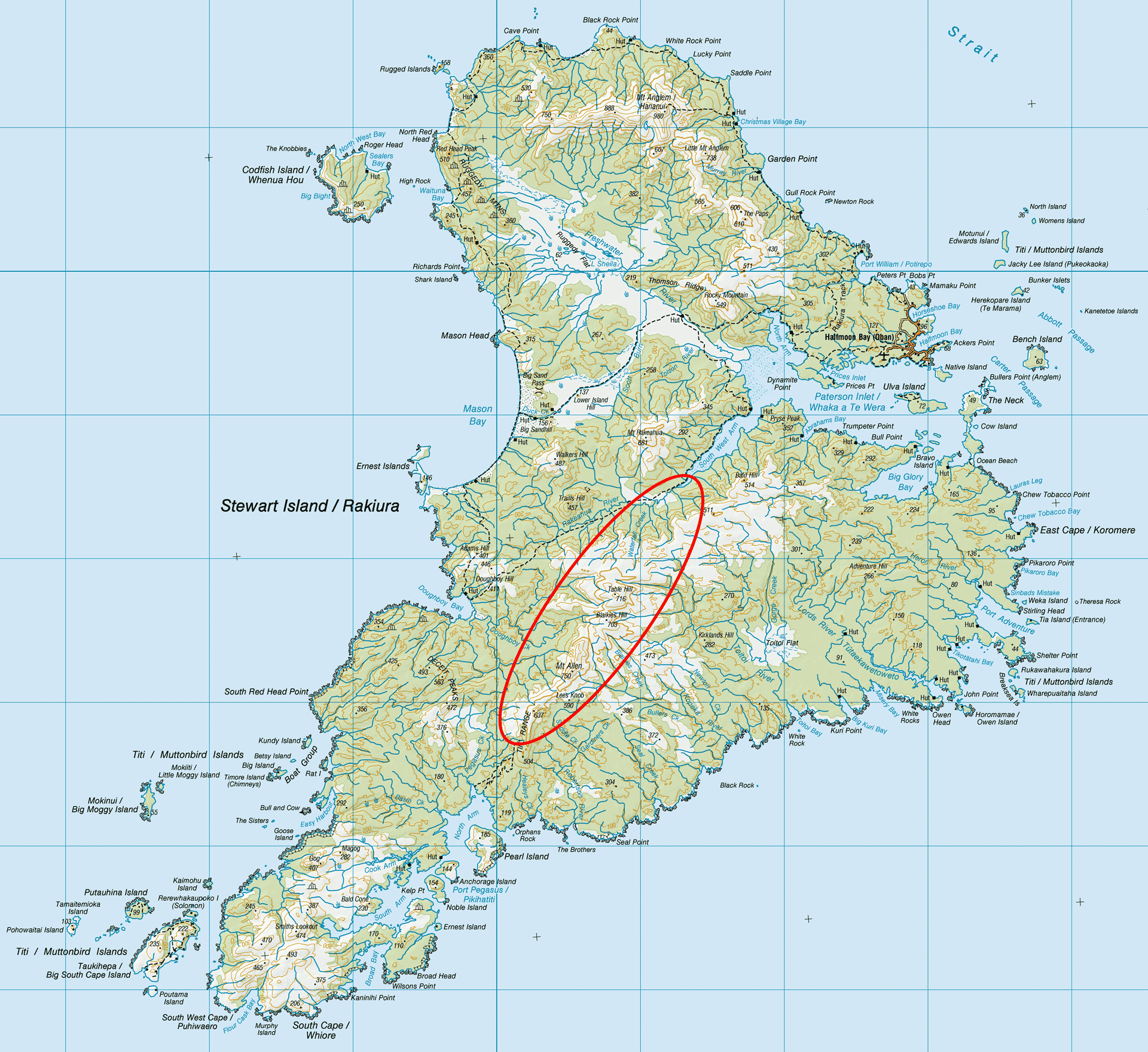
If you want to save a species or habitat it’s a fight for evermore. You can never turn your back.
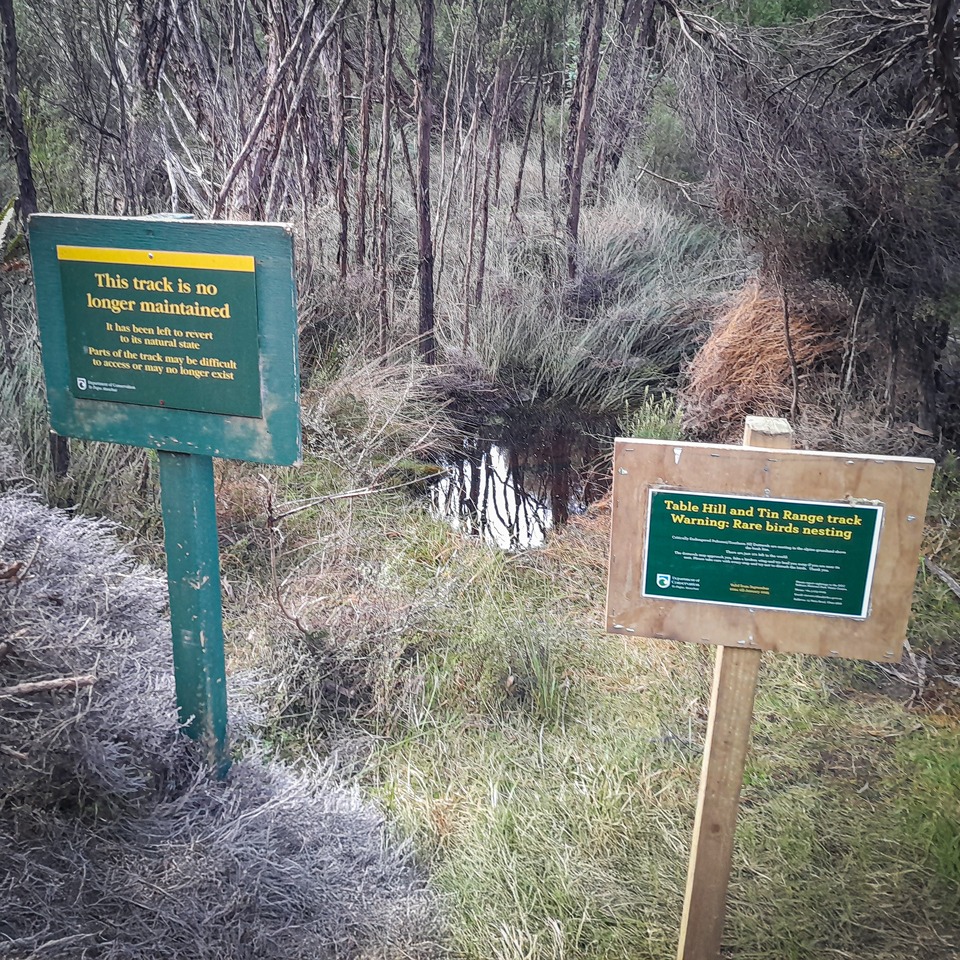
The critically endangered Southern NZ Dotterel/Pukunui is perhaps one of the most resilient birds in New Zealand.
These amazing birds nest up on Rakiura’s Tin Range, a place whose infamous reputation for both unpredictable and often atrocious weather precedes it. Some days you can’t stand up on the Tin Range as the prevailing westerly winds roar across the range’s exposed tops with a force to be reckoned with.
But these amazing birds weighing in at only 160g call this home during the breeding season from October to January. It seems almost impossible that they could survive up there in the inhospitable conditions but these hardy southern NZ dotterels do just that, and I think that’s why I find them so fascinating.
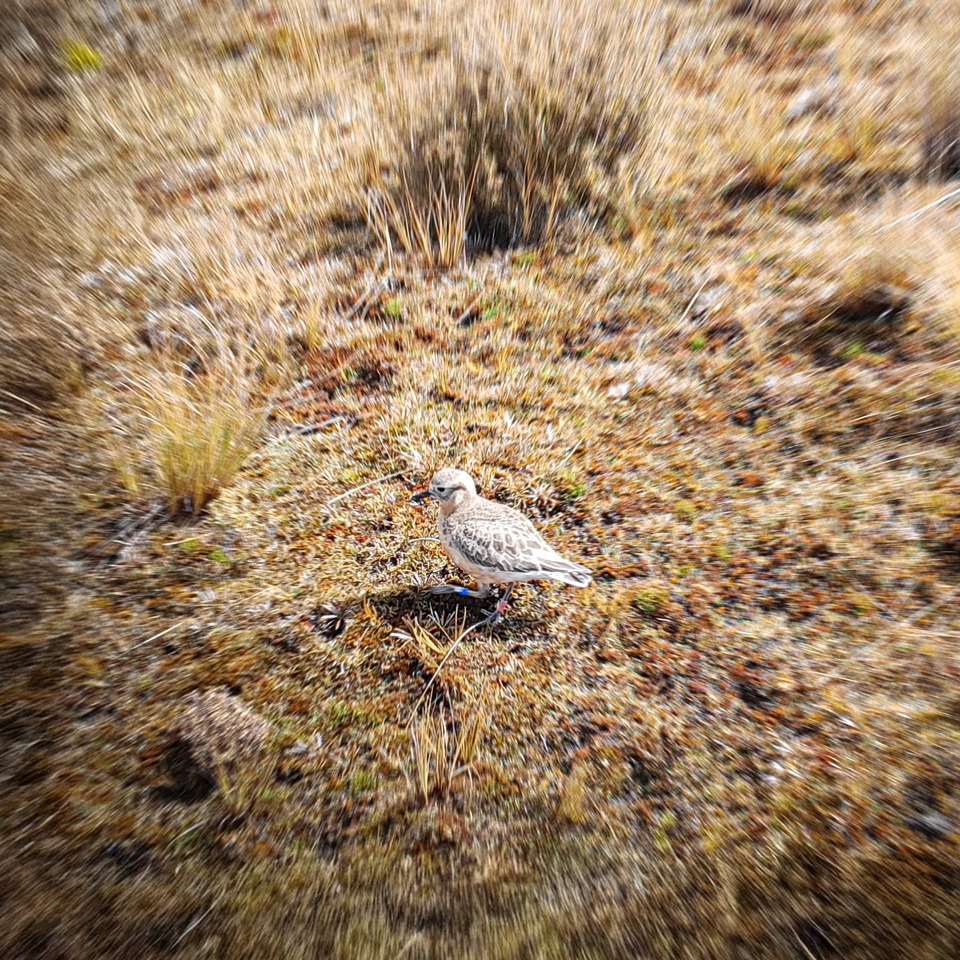
I had completed an FMC Expedition Scholarship in March visiting Gog and Magog, and walking the length of the Tin Range and it was during this trip I had met some NZ Southern Dotterels at Mason Bay.
Seeing a flock of the birds at Mason Bay was pretty special as I knew prior to my tramp that there were estimated to be only 123 birds left in the world. Rakiura, and especially the Tin Range, has always felt like a special place to me but more so after my trip in March so when the opportunity arose to do some volunteer work with DOC and their Southern NZ Dotterel team, I knew I would instantly commit.
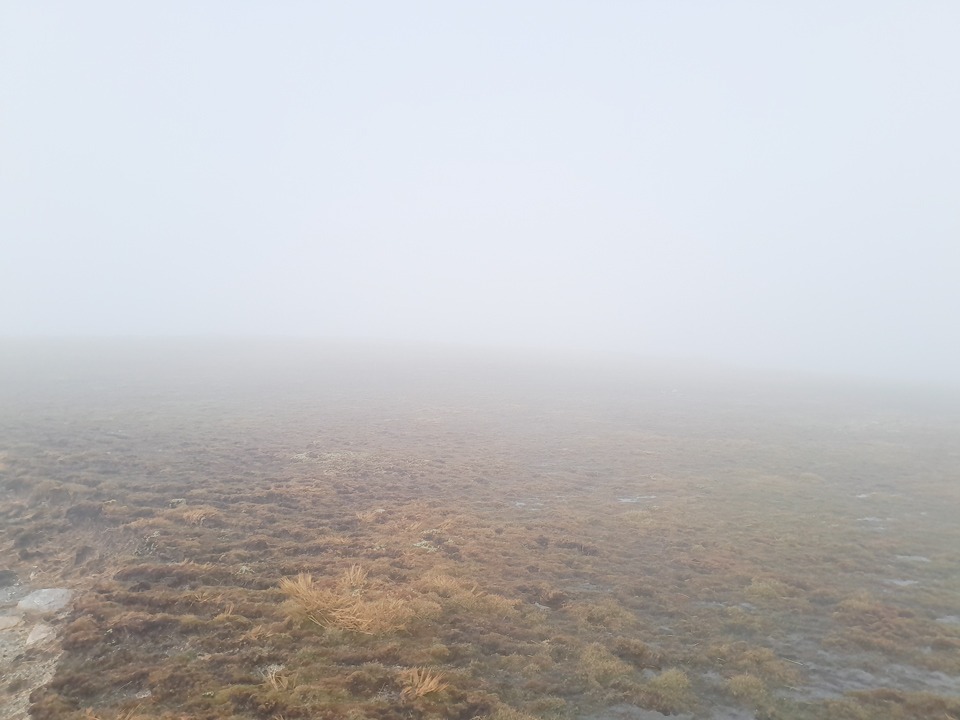
The first afternoon we flew to the DOC research hut on the Tin Range after dropping Ranger Guy off further south. Originally the plan had been for a boat to Rakeahua Hut and to walk up but the team needed to drop off a bunch of supplies and gear to the hut.
That evening we went up to what Ranger Daniel said the team called “Home Paddock” and spotted a few Southern NZ dotterels. The birds were easy to differentiate from banded dotterels because the Southern NZ Dotterels’ plumage turns red during breeding season.
Unfortunately, we also came across a nest with a dead chick—it appeared to have just not survived rather than being predated.
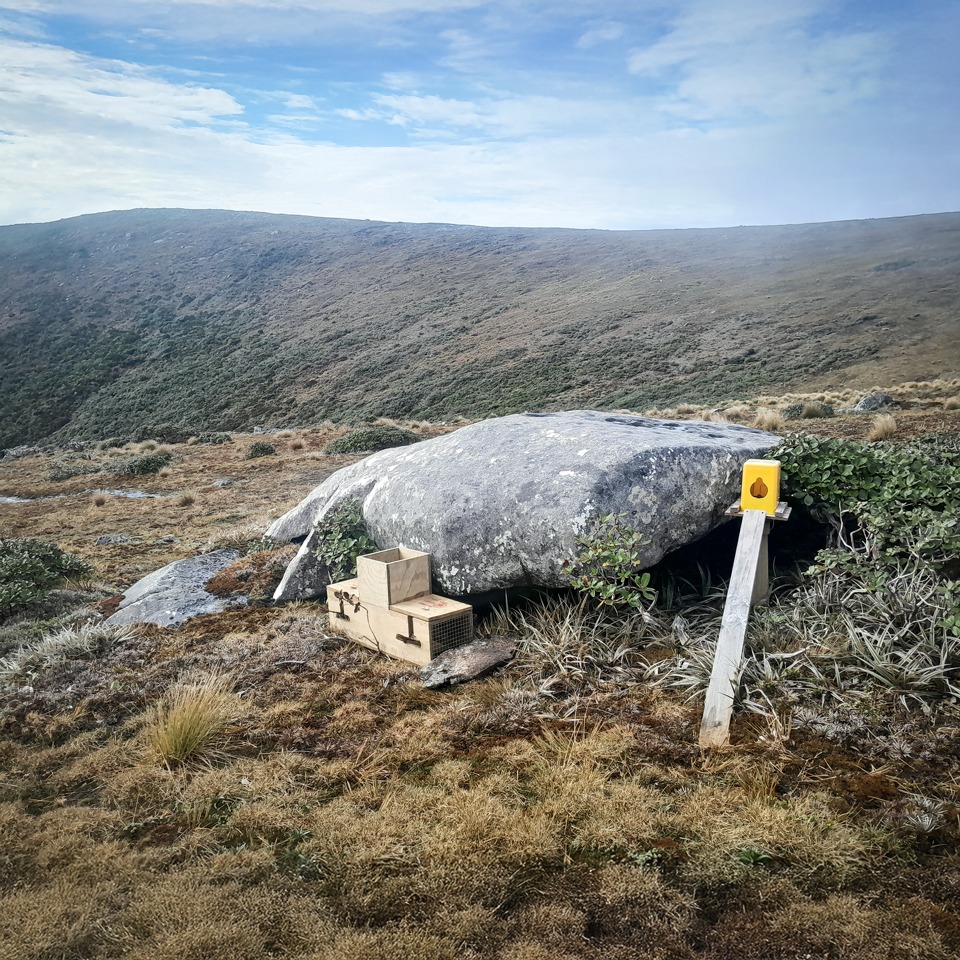
Predation is the biggest threat to the Southern NZ Dotterels, especially over the breeding season. The male birds are most at risk of predation because they sit on the nests at night while the female is out feeding. Southern NZ Dotterels were once found throughout the South Island, and found to be nesting as high as 2,500 metres above sea levels but the introduction of both human hunting and stoats saw a rapid decline.
The birds on Rakiura still face rapid decline from predation by feral cats, rats, white tailed deer, harriers, spur-wing plovers and black backed gulls. The DOC team are working tirelessly especially during breeding season to eradicate these predators and halt the rapid decline of the dotterels.
It’s often heartbreaking work, especially when they lose chicks as the population really has no room to lose even a single bird. Every single bird counts.
Ranger Daniel said to me that one breeding season they lost over 40 birds and that if the steep decline continued at that rate the Southern NZ Dotterel could be functionally extinct by 2030. It’s a sobering thought that we could lose these resilient birds forever.
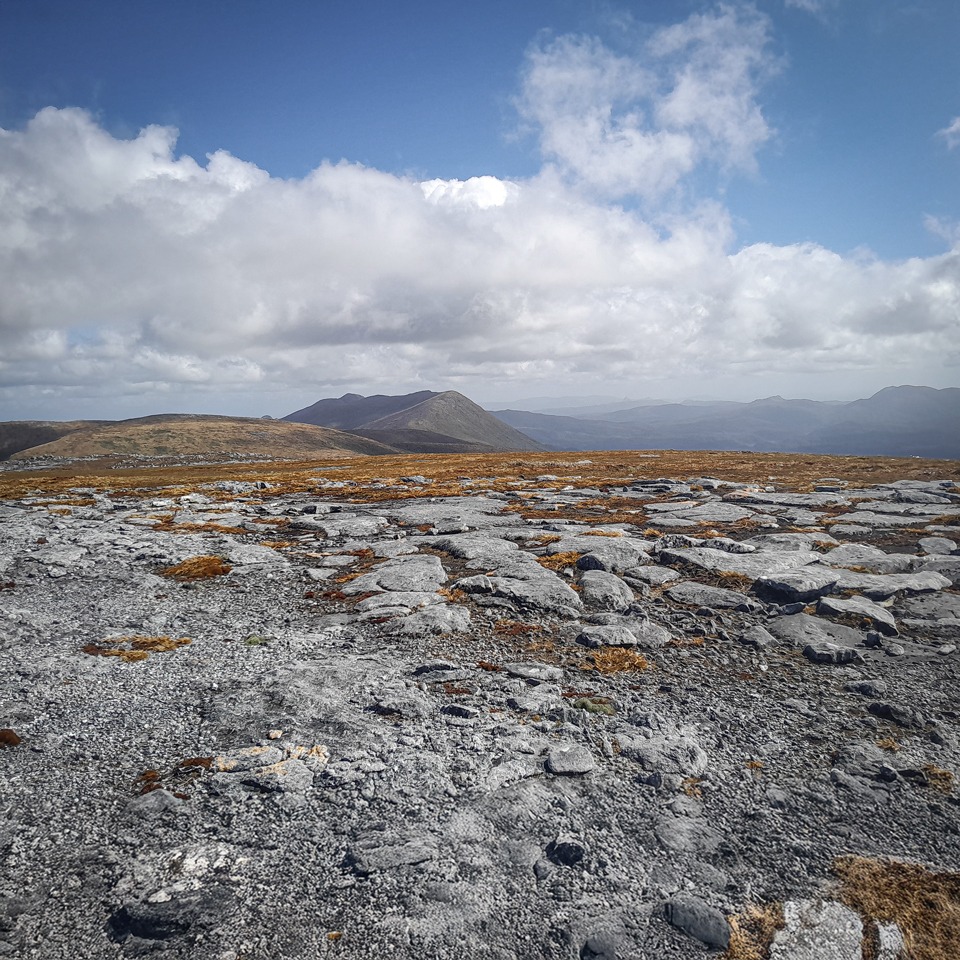
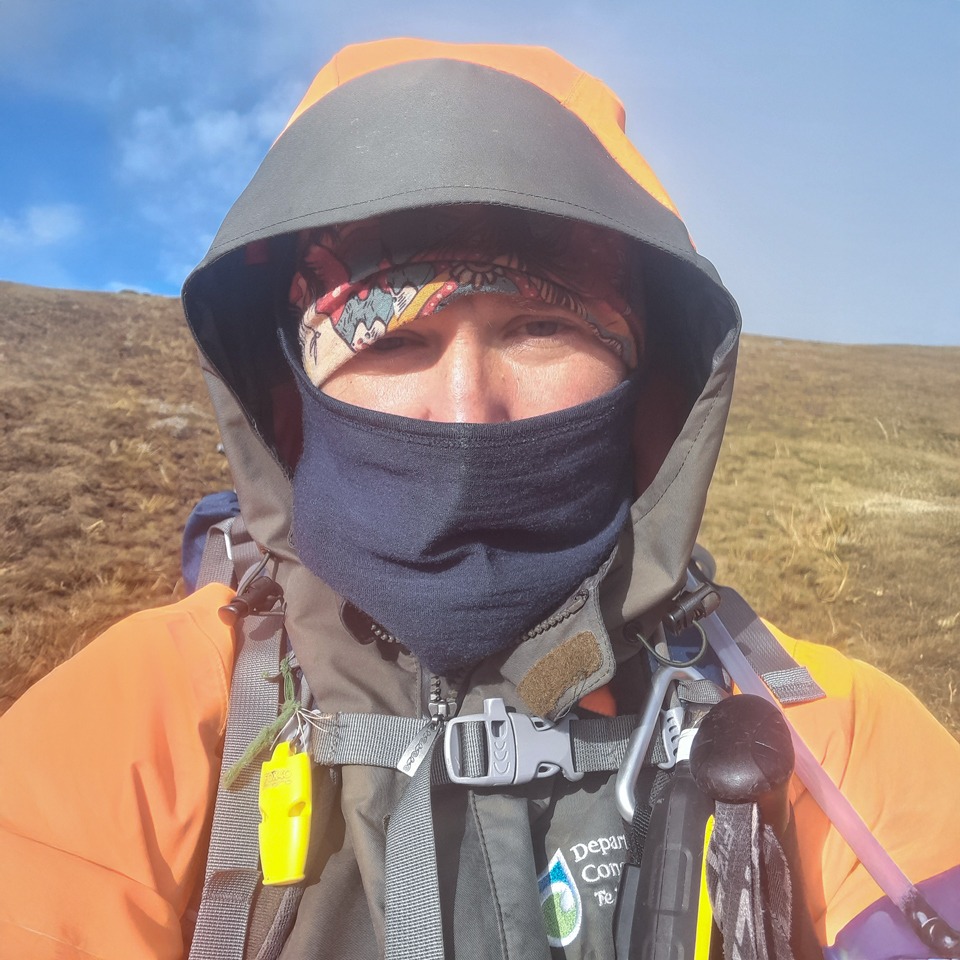
The next day we walked to Blaikies Hill. We rebaited the traps along the way. They were a mixture of SA2 and Belisle traps that I had never come across before on my trapping work so Daniel taught me how to reset them safely.
The Belisle traps took a few goes for me to feel confident with and what was the best way for me to get the safety clips on and off. We were removing lots of rats from them but no cats so far and saw a few more dotterels along the way.
The next two days had a superb weather forecast. Daniel would do some predator work at the northern end of Tin Range and I would take off south looking for birds especially around Mt Allen.
I originally tried to approach spot height 731 from the northern end but after slowly battling through scrub with little progress I decided my time was better spent going around via Kopeka River. I headed across to spot heights 730 and 731 where I came across two Southern NZ Dotterels. One banded and one unbanded.
I radioed in band colours to Daniel who has an incredible recollection of all the birds and knew it was an Awarua Bay bird (birds usually spend the non-breeding seasons at Mason Bay or other Southland Beaches).
When near a nest, the birds will try to lead you away or exhibit broken wing behaviour to cause distraction. I felt like the birds were trying to lead me up the hill so I had a careful scout around for a nest but didn’t manage to find one—their nests can be very well hidden. Daniel found a nest later that night where he was working well hidden under some tussock.
I waved goodbye to the birds and went to climb up Mt Allen, which is the highest point on the Tin Range—I could see right down to Gog and Magog at Pegasus.
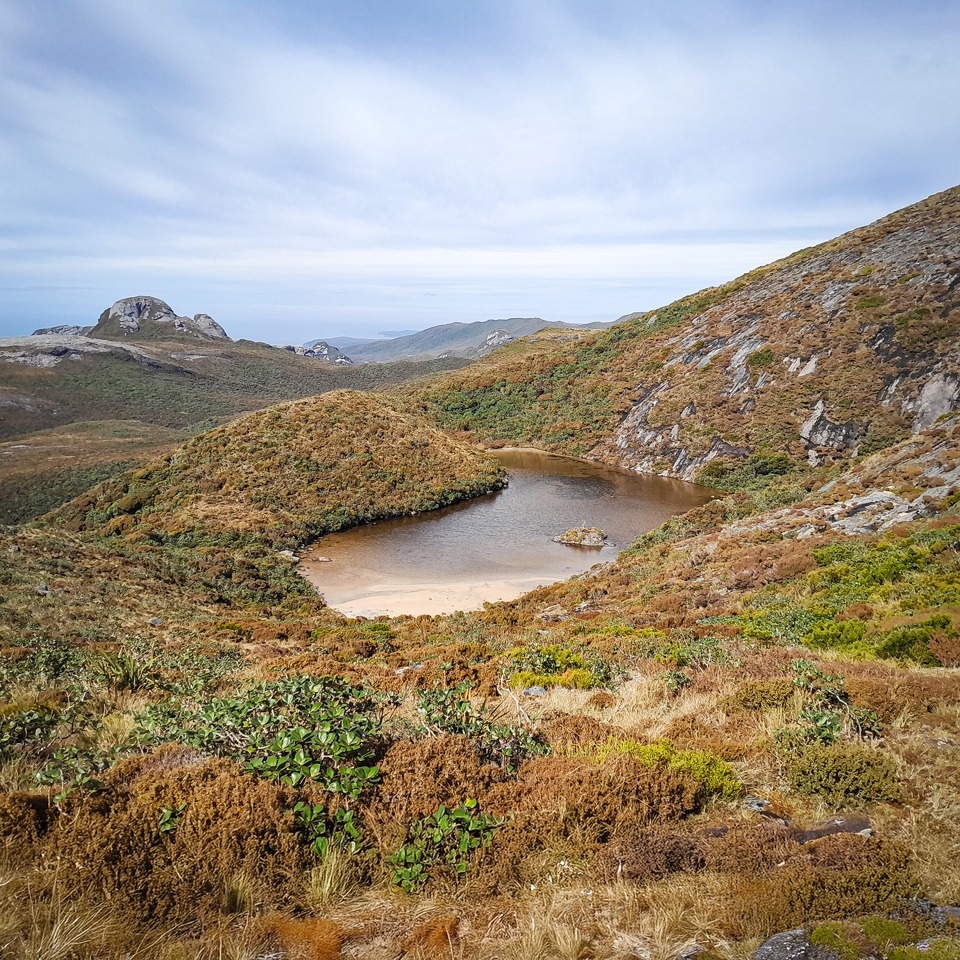
I had initially decided to camp up on the ridge and had set up my tent but the wind had started to pick up and given my previous experience with wind on the Tin Range, I decided to bail and sprint back down the hill to the Kopeka River campsite where I had sheltered from a storm in March.
The next day I wandered further down the Tin Range looking for birds. I was hoping to make it to the trig right at the southern end of the range before turning around to head back to Blaikies but got slowed down by scrub bashing around Granite Knob.
The next day Daniel and I decided that Daniel would do the Blaikies Bush loop traps and I would go up over Blaikies and Table Hill completing the traps. It was raining, windy and claggy with visibility down to 50 metres at times. I had to stop and layer up to stay warm and because of the mist, it was quite disorientating. I was simply going between traps guided by my compass and GPS.
By the time I had made it through “Slog Saddle” as nicknamed by the DoC team and on my way up to Table Hill the mist was clearing intermittently and the rain had stopped making for a nice evening on Table Hill. I made it down to “Home Paddock” at the same time as Daniel who had found a small flock of dotterels out feeding.
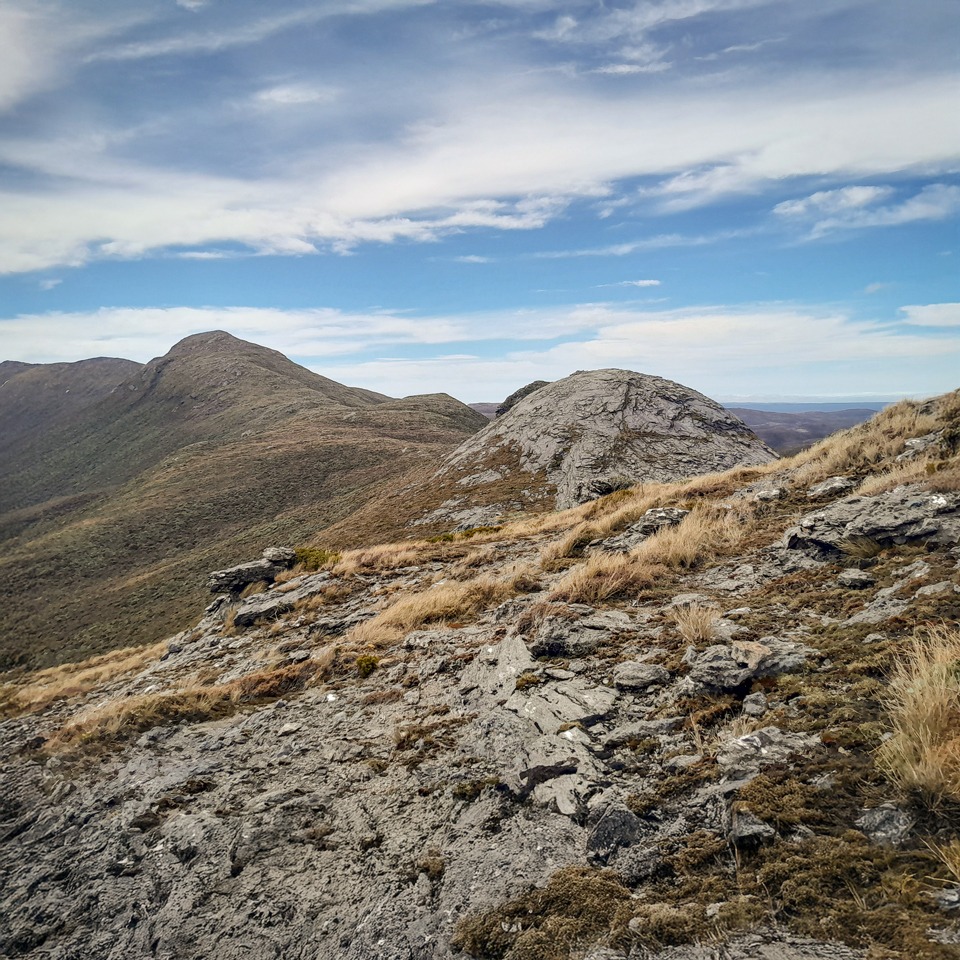
The next two days I spent rebaiting the traplines including trying to find an elusive trap on Table Hill that took me three attempts. I found a banded bird on Tussock Spur and spent a while searching for a nest; making a waypoint for the team to follow up on.
Later that day I came across the same bird on Alphabet Spur when I was doing my final traps for the trip. As I was walking back to the hut I had what I called a little “dotterel party” as a flock of five birds turned up almost as if they were farewelling me.
The next morning we headed down the hill to Rakeahua Landing for the boat to pick us up at high tide. On the way down we came across our first feral cat in a trap. We finally made it to the Southern Circuit track just under 2km away from Rakeahua Hut.
I had just finished saying how it was unusual to not find lots of mud and Daniel had finished telling me about how a previous Ranger had said that he didn’t go around mud but rather went straight through only to go chest deep in a mud hole. At the exact same mud hole, I was trying to navigate around the edge when I slipped and fell in.
Daniel turned back to find me in the mud up to the waist belt of my pack and my feet weren’t even touching the bottom of this mud hole as I was balancing on a stick. I thought the whole situation was hilarious but thought I might not be allowed on the boat covered in so much mud!
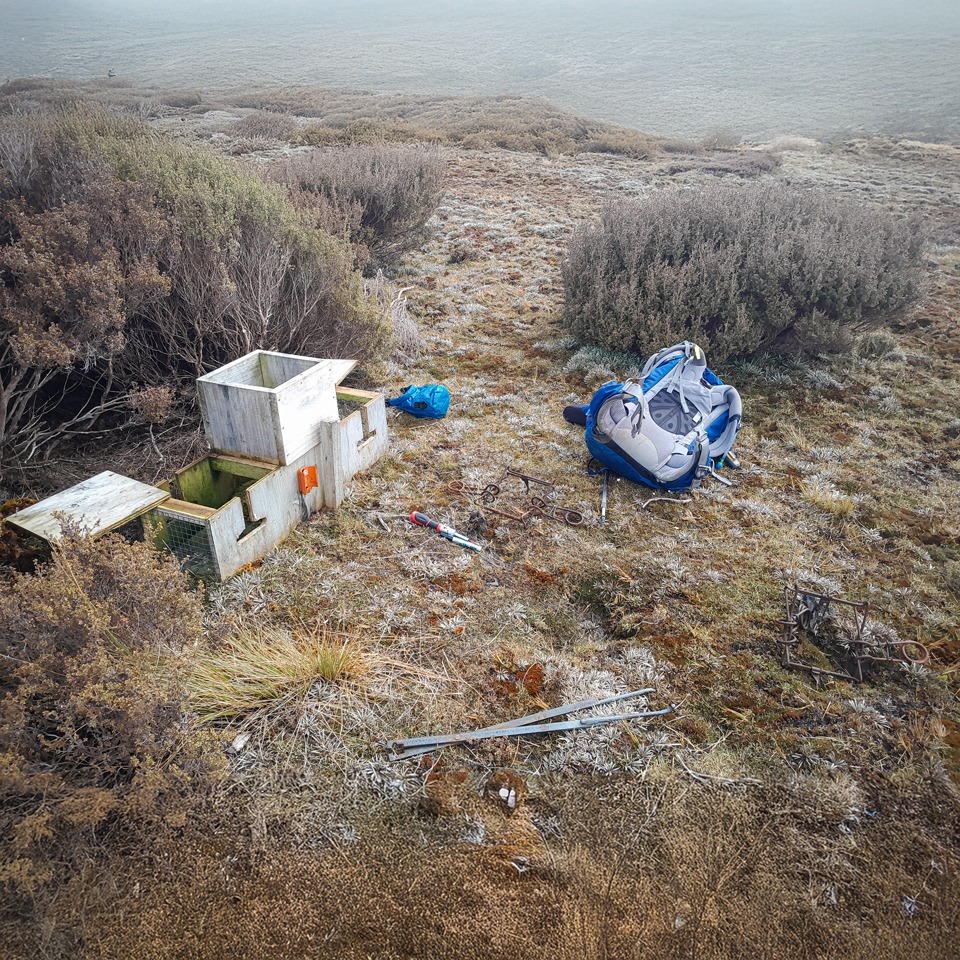
Ranger Sara, or “Penguin Sara” as I called her because she was the Hoiho Ranger, picked us up in the boat and wanted to make a stop to check on some Hoiho chicks. Hoiho, one of the world’s rarest penguin species, were in the middle of their breeding season and like the dotterels are facing declining numbers.
The biggest risk at breeding time is the chicks developing avian diphtheria which has led to the development of a strategy where eggs are uplifted from nests and taken to Dunedin Wildlife Hospital for early care before being returned to the nest. These chicks had hatched before the eggs could be collected so they were staying in the nest as moving live chicks would be extremely difficult.
The first chicks were over 500g and probably approximately 10 days old so Sarah thought they had probably gotten through the high-risk time. The other chicks were only just over 100g and likely two days old and unfortunately only had about 15% chance of survival, but so far were looking OK.
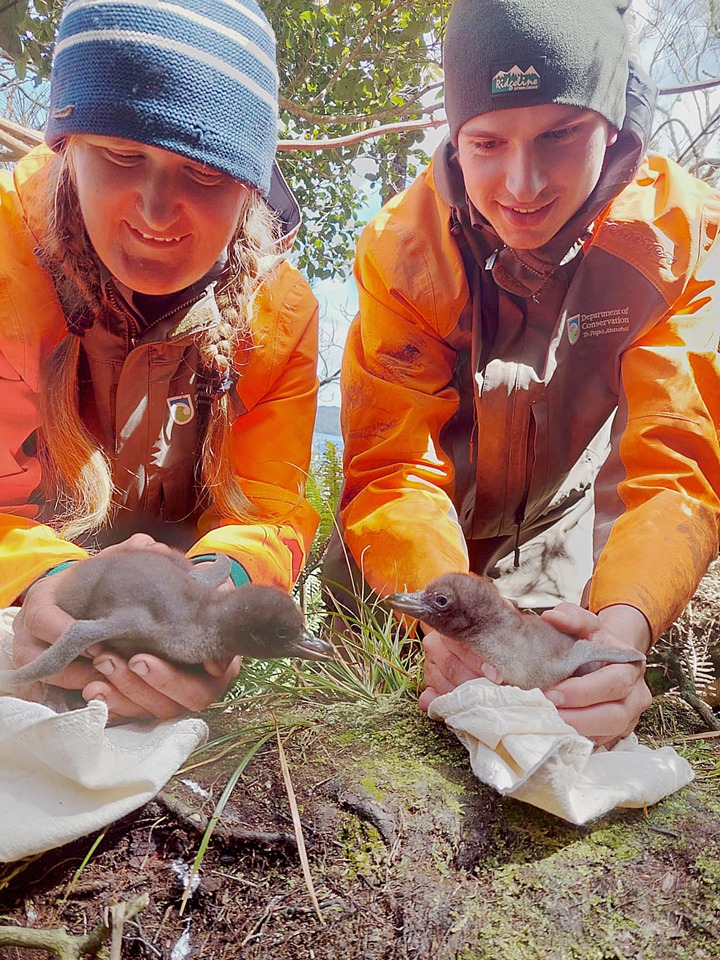
New Zealand has the highest proportion of threatened species in the world and conservation work to look after these species will need to be a collective effort. The goal of the Predator Free movement is not just to hold the line against predators, but to push that line right back, until we achieve eradication – so we can safeguard the future of our native species, such as the Southern NZ Dotterel and Hoiho.
It’s a big goal, but we can’t afford to be anything less than ambitious if we want to succeed and look after these beautiful birds. DOC estimates that around 200,000 New Zealanders give their time to conservation projects each year. Every little bit counts and we can all contribute in a meaningful way.
There are many ways you can get involved with the Predator Free 2050 movement—see my suggestions here
I was incredibly privileged to spend a week working with DOC’s Southern NZ Dotterel Team and see the amazing work the team does.
Ways you can help
Education: Help improve awareness about the Southern NZ Dotterel – two good places to start are with this short film https://www.youtube.com/watch?v=F8WoN43rhzM
And joining the Southern NZ Dotterel/Pukunui Facebook that is updated by one of the Rangers.
Volunteer: Volunteer to help the Rakiura Southern NZ Dotterel Team with vital trapping work and bird counting/nest searching https://www.doc.govt.nz/get-involved/volunteer/
Donate: Donate to the New Zealand Nature Fund Dotterel Project https://nznaturefund.org/projects/southern-dotterel-pukunui/
Acknowledgements
Thank you to the Rakiura DOC Southern NZ Dotterel and most especially to Ranger Daniel who I worked with during the week and to Ranger Guy for helping organising the volunteer work. You are all an incredibly hard-working team whose commitment and passion for conservation work with the NZ Southern Dotterels is inspiring. I really enjoyed the week with DOC—the teamwork, dedication and kindness were pretty special.
Thank you to Ranger Sara for giving me the opportunity to help out with the Hoiho chicks.

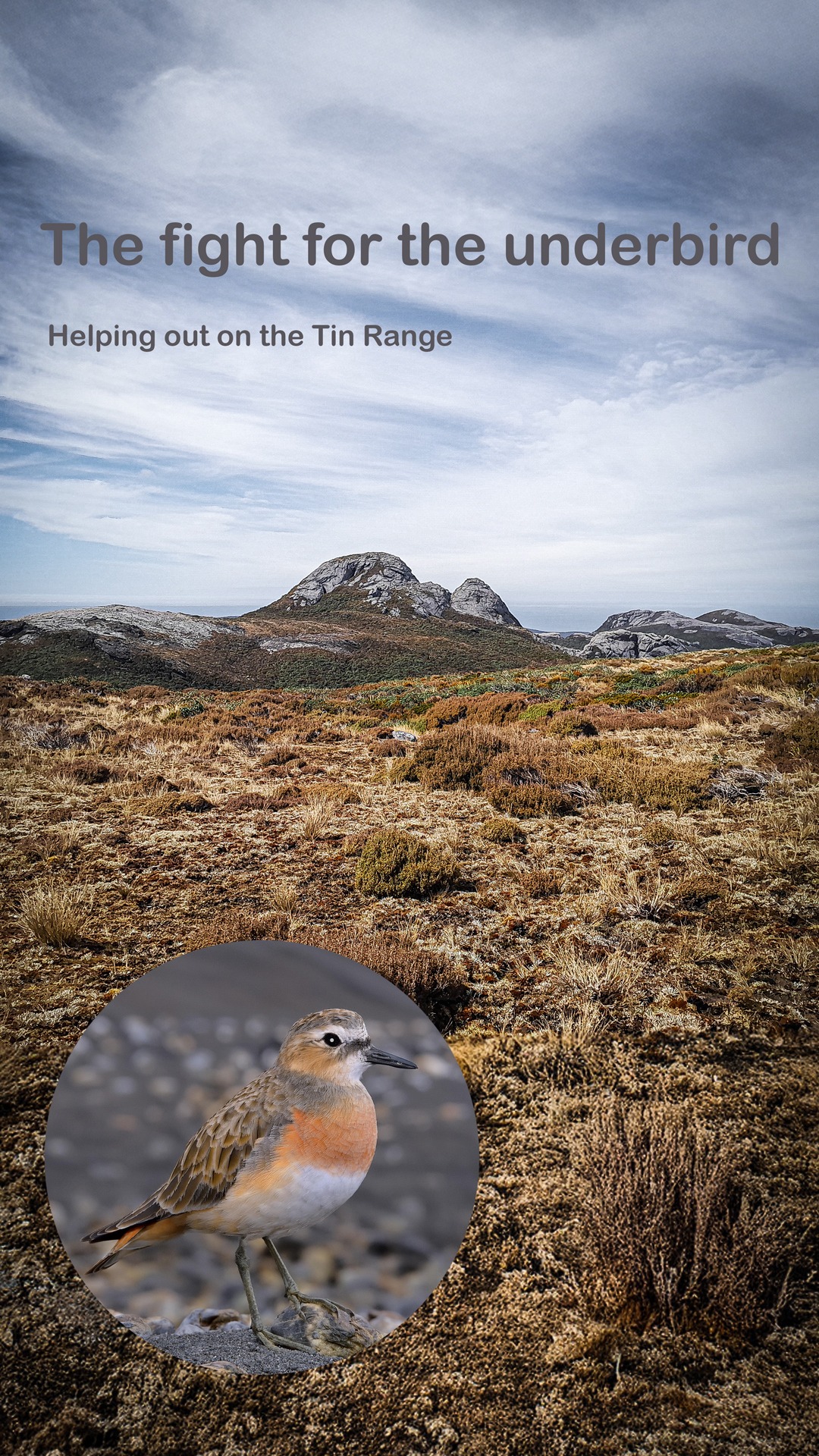
Hi Sarah, we cut the predator control lines on the Tin Range, THE most horrendous tracks we have attempted in over 25 years of track cutting, but very rewarding. Courdouring was one way of getting rid of branch material… but the weather was a challenge. Thanks from Heslip Forest Contracting Ltd, ( I could write a book about all our track cutting around southern NZ
Awesome stuff Sarah. Must feel good to k ow you are making a difference
An amazing and inspiring story.
Thanks for sharing.
Kendall